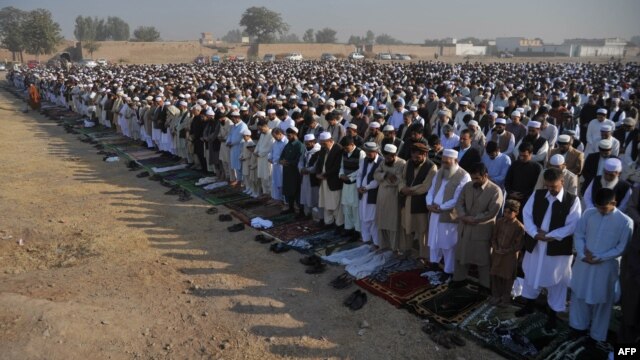
ISLAMABAD -- More than 1.6 million Afghan refugees registered in Pakistan are due to be repatriated by the end of the year.
But with just three weeks to go, a recent United Nations survey found that roughly 80 percent have no intention of returning to Afghanistan.
According to the survey, most Afghan families living in Pakistan feel Afghanistan is just not safe enough to go back home. Others cited the inability to earn a living and the lack of anywhere to live in their native country.
Pakistani Minister for States and Frontier Regions Shaukat Ullah acknowledges the challenges involved in convincing refugees to return to their country after decades of living in Pakistan.
"After 32 years if a person is returning from a country where he has been born and he is going to a country like Afghanistan they will think 100 times," Ullah says.
Since the Taliban takeover of Afghanistan in the 1990s, Pakistan has hosted one of the largest refugee populations in the world. Some 3.8 million refugees have crossed back over the border into Afghanistan.
The UNHCR has offered plastic buckets, soap, blankets, cash, and a one-way ticket for those still living in Pakistan, and succeeded in encouraging another 72,000 people to return to Afghanistan this year.
But there are still 1.6 million official Afghan refugees in Pakistan.
UNHCR representative Neill Wright says that organization is waiting to hear what Pakistan has planned for these refugees after the December 31 deadline.
"I know that the government is very actively engaged in considering what its policy will be in terms of the management of Afghan refugees in 2013, and in terms of supporting this continued partnership that we have with Afghanistan over voluntary repatriation, and I look forward to hearing what that strategy will be," Wright says.
Responding to concerns that there will be another wave of refugees from Afghanistan after international combat forces leave the country in 2014, Wright says contingency plans are under consideration.
"This is clearly an issue that I am involved in discussions with many people, senior politicians, people in Afghanistan, members of the international community," Wright says. "Of course, when you do contingency planning, you look at a worst case scenario and you look at a best case scenario, and if you are sensible you will probably look at something in the middle."
He declines to give any further details.
Many Afghan refugees live in very poor conditions in Pakistan.
According to the UNHCR, less than one-quarter of them work, and almost three-quarters of Afghan children are not going to school.
But with just three weeks to go, a recent United Nations survey found that roughly 80 percent have no intention of returning to Afghanistan.
According to the survey, most Afghan families living in Pakistan feel Afghanistan is just not safe enough to go back home. Others cited the inability to earn a living and the lack of anywhere to live in their native country.
Pakistani Minister for States and Frontier Regions Shaukat Ullah acknowledges the challenges involved in convincing refugees to return to their country after decades of living in Pakistan.
"After 32 years if a person is returning from a country where he has been born and he is going to a country like Afghanistan they will think 100 times," Ullah says.
Since the Taliban takeover of Afghanistan in the 1990s, Pakistan has hosted one of the largest refugee populations in the world. Some 3.8 million refugees have crossed back over the border into Afghanistan.
The UNHCR has offered plastic buckets, soap, blankets, cash, and a one-way ticket for those still living in Pakistan, and succeeded in encouraging another 72,000 people to return to Afghanistan this year.
But there are still 1.6 million official Afghan refugees in Pakistan.
UNHCR representative Neill Wright says that organization is waiting to hear what Pakistan has planned for these refugees after the December 31 deadline.
"I know that the government is very actively engaged in considering what its policy will be in terms of the management of Afghan refugees in 2013, and in terms of supporting this continued partnership that we have with Afghanistan over voluntary repatriation, and I look forward to hearing what that strategy will be," Wright says.
Responding to concerns that there will be another wave of refugees from Afghanistan after international combat forces leave the country in 2014, Wright says contingency plans are under consideration.
"This is clearly an issue that I am involved in discussions with many people, senior politicians, people in Afghanistan, members of the international community," Wright says. "Of course, when you do contingency planning, you look at a worst case scenario and you look at a best case scenario, and if you are sensible you will probably look at something in the middle."
He declines to give any further details.
Many Afghan refugees live in very poor conditions in Pakistan.
According to the UNHCR, less than one-quarter of them work, and almost three-quarters of Afghan children are not going to school.


